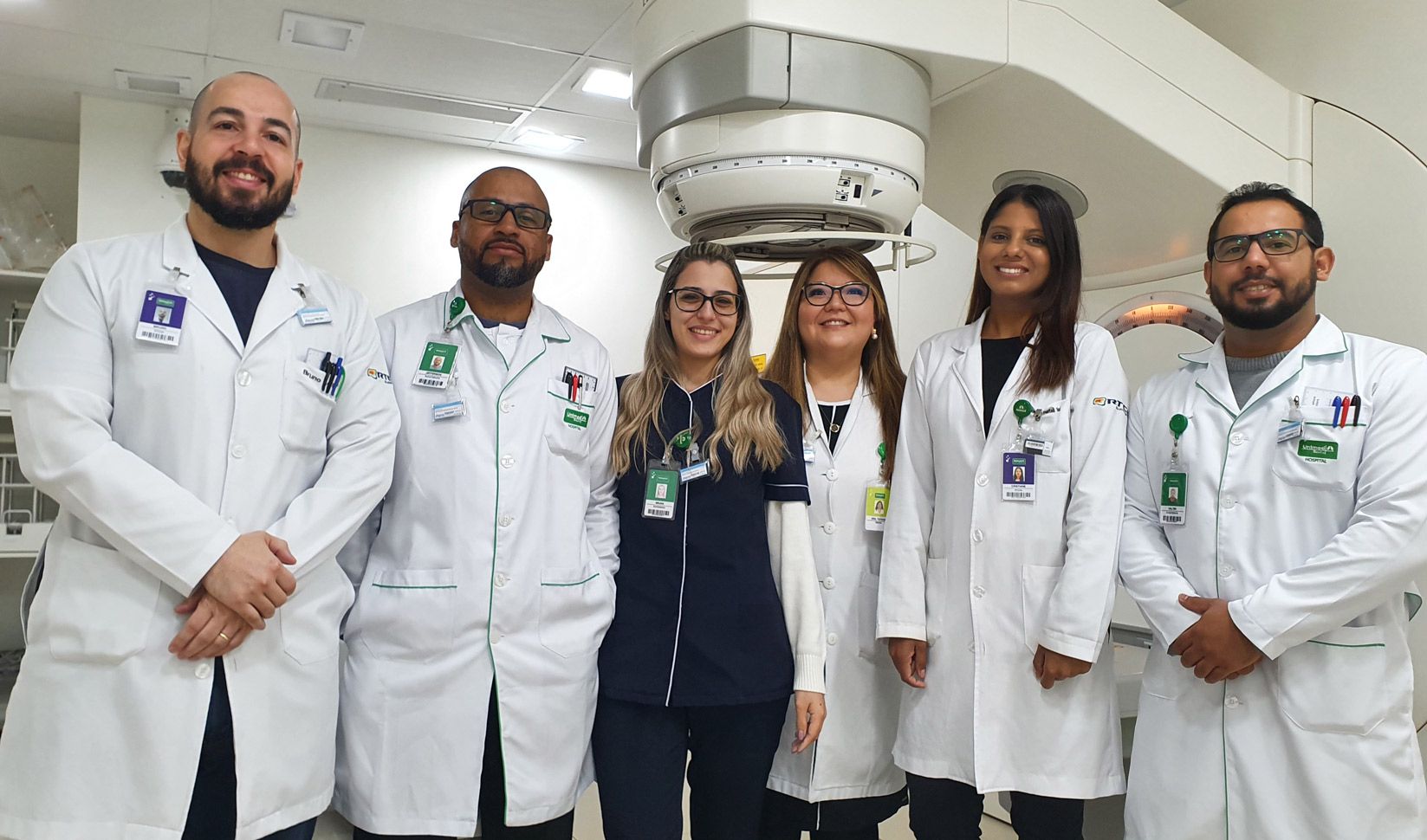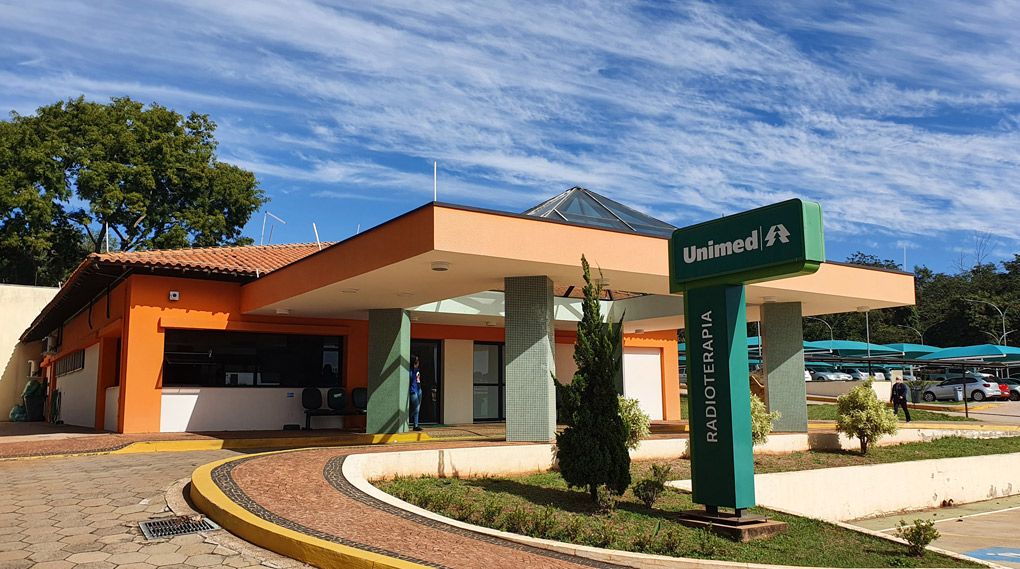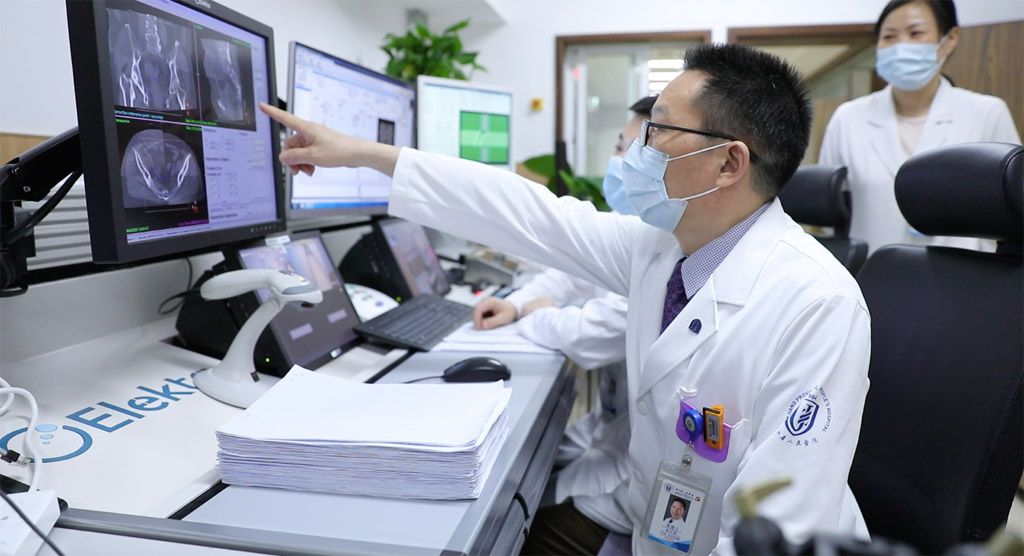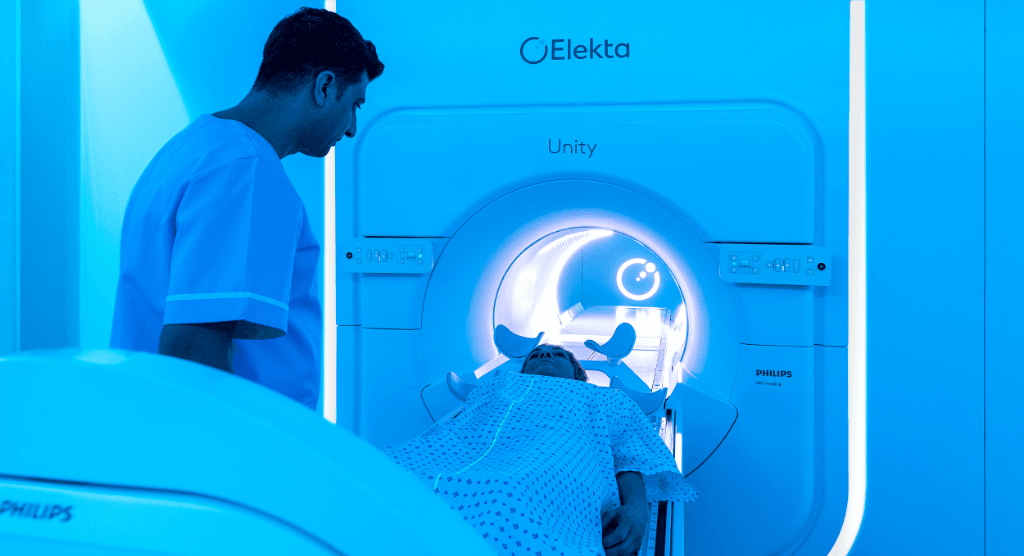Brazilian hospital streamlines pre-radiotherapy workflow with phantom-less QA solution

Hospital Unimed Bauru clinicians use Elekta’s novel EPID-based patient QA software to easily check RT beams before treatment
In 2021, with the impending implementation of VMAT at Hospital Unimed Bauru’s (Bauru, Brazil) radiotherapy department, physicians set out to acquire a volumetric detector for pre-treatment QA. They considered several phantom-based QA options on the market until Elekta representatives advised them that the company offered EPIbeam* software, a simpler, phantom-less solution.

“We liked EPIbeam at first sight,” says Bruno Roque, medical physicist at Hospital Unimed Bauru, which treats about 40 patients each day, 40-50 percent of which are IMRT/VMAT treatments. “Other kinds of volumetric detectors require users to set up and align the detector itself prior to QA irradiation. With EPIbeam, there is no need for additional equipment or alignment, and the software’s price was reasonable compared with other solutions.”
EPIbeam uses the linac’s EPID panel to calculate the dose delivered and does not require the use of a phantom. It automatically compares the delivered dose with the plan dose. Before the patient’s first fraction, EPIbeam ensures correct dose delivery, correct MLC and machine functioning and the integrity of data transfer.
DOSIsoft application specialist Gloria Di Nardo – in collaboration with IT teams from Hospital Unimed Bauru and Elekta – coordinated EPIbeam installation at the center in mid-2021.
“I began my part of the implementation by modeling fields on the treatment planning system with Gloria, which took just a couple of hours, then irradiated those fields in our linac’s iViewGT EPID panel, which took 60 minutes max,” Roque explains. “After that, I sent the iViewGT images to Gloria as well as some required TPS data. Subsequently, after a few weeks, they installed the EPIbeam model and we had application training. It was really quick to implement EPIbeam and the training was very good.”
Roque and his team began using EPIbeam in September 2021.
Easy to use, simple analysis
“EPIbeam use is very straightforward,” according to Roque. “For irradiations, it takes only a few minutes to expose the iViewGT panel and irradiate the plan. It can be done easily in any window during the treatment routine.”
“EPIbeam use is very straightforward.”
Analysis also has been uncomplicated he adds.
“First, you export the plan from the TPS to the software – this path is configured during installation,” he explains. “Then, when we open the plan in EPIbeam it allows us to import the acquired image on iViewGT; it matches the patient IDs with the field names. Once the images are imported, the analysis automatically begins, following the default protocol or the one that was chosen during image importation.
“These protocols can be easily created or modified as well,” Roque adds. “I’m the only one who performs the gamma analysis, but irradiations are frequently executed by an RTT once the routine of that day is finished. And we do that for every IMRT or VMAT patient.”

EPIbeam accuracy
At Hospital Unimed Bauru, the spatial resolution of EPIbeam is determined by the resolution of the iViewGT panel, which for VMAT has 0.4 mm pixels at isocenter.
“In terms of accuracy, EPIbeam was able to detect a small difference in the modeling of the MLC on the treatment planning system,” Roque notes. “By changing the MLC offset, I could achieve much better results in the gamma analysis. EPIbeam detected a small systematic dose error in VMAT irradiations that was caused by this post-modeling offset parameter.”
Time savings
Because there is no longer a need for phantom setup for pre-treatment QA, Hospital Unimed Bauru clinicians save at least 10 to 20 minutes before irradiations, according to Roque.
“This allows us to irradiate between two patient treatments, if necessary,” he says. “The time spent with analysis is comparable with other systems, but we save a lot of TPS calculation time, since there is no requirement to calculate the plan in a phantom. We just need to export the patient’s calculated plan to the software.”
An attractive option
After months of daily use, Roque and his colleagues are completely satisfied with EPIbeam.
“If a center is looking for a volumetric, patient-specific QA solution and is using Elekta linacs, they should really consider EPIbeam. It is extremely easy to use, practical, reliable and saves a great deal of setup time…”
“We appreciate the confidence that EPIbeam gives us. The software can verify that the treatment plan irradiated by the linac is sufficiently similar to that planned on the treatment planning system, which ensures the effectiveness of therapy,” he says. “If a center is looking for a volumetric, patient-specific QA solution and is using Elekta linacs, they should really consider EPIbeam. It is extremely easy to use, practical, reliable and saves a great deal of setup time, which would be critical in a center with a busy treatment routine.”
Learn more about Elekta’s patient QA solutions.
*EPIbeam designed by DOSIsoft S.A. It is CE marked and FDA cleared. For other markets, contact your Elekta sales representative.
LWBDOSI220616





